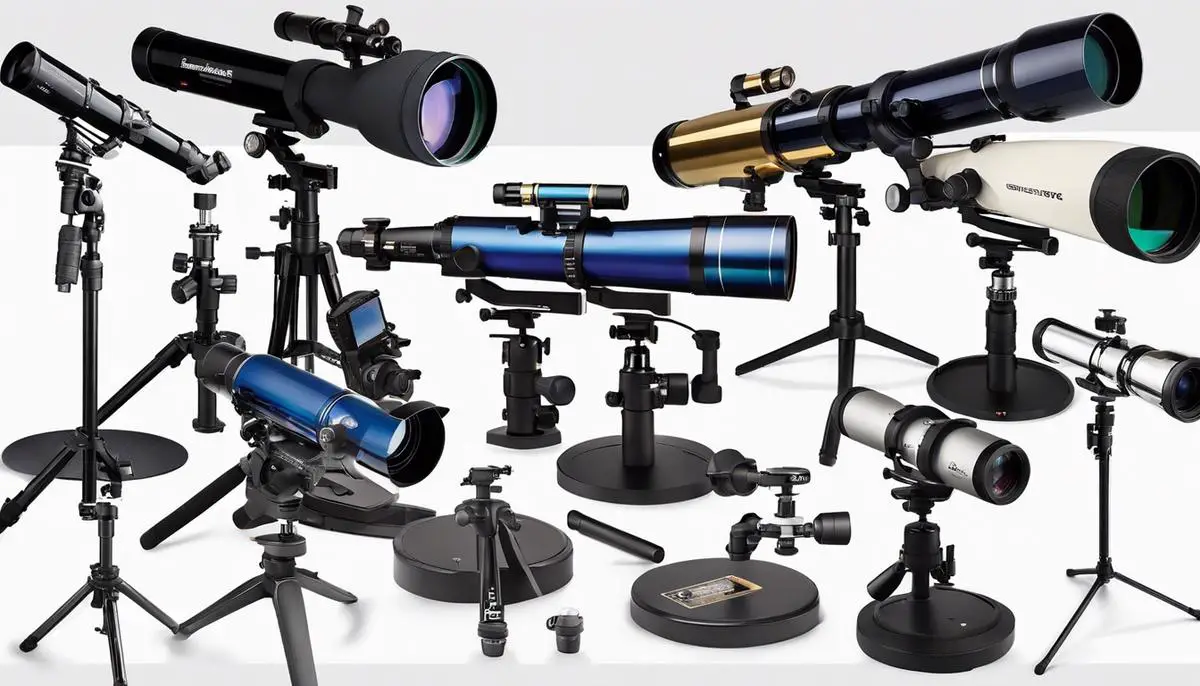Stargazing has long beckoned the human spirit towards the velvety black canvas of the night sky, inviting it to decipher the mysteries written in points of light far beyond our reach. At the heart of this cosmic ballet are telescopes – instruments that serve as our primary windows to the universe. Navigating their varied forms and functions is essential for anyone eager to unlock the heavens. For the astute observer, refracting, reflecting, and catadioptric telescopes each offer unique vantages from which to view the panoply of celestial wonders. Together with a discerning look at the intricacies of mounts and tracking, the exacting demands of optical resolution, and the boundless potential enabled by adaptive accessories, our guide embarks on a voyage through the optics and opportunities that shape our celestial odyssey.
Types of Telescopes
Exploring the Cosmos: A Comparative Analysis of Telescope Designs
The quest to unravel the mysteries of the cosmos has intricately woven itself into the fabric of human curiosity. Telescopes, the critical instruments in this endeavor, come in three primary categories: refracting, reflecting, and catadioptric designs. Each has its own distinct features and advantages that contribute distinctly to the field of astronomy.
Refracting Telescopes: Windows to the StarsRefracting telescopes, known as refractors, operate on the principle of light refraction through lenses. A refractor’s main objective lens focuses light to form an image at the eyepiece. The simple design of two lenses minimizes light loss, resulting in bright images, even for distant celestial bodies. This design tends to produce high-contrast views that are especially beneficial for observing planets and the moon. Also, refractors are relatively low maintenance due to their enclosed tube that shields the optics from dust and misalignment.
Reflecting Telescopes: Mirroring the HeavensOn the other hand, reflecting telescopes, or reflectors, harness mirrors to gather and focus light. These telescopes boast a large primary mirror which is advantageous when gathering light from faint, faraway objects like distant galaxies and nebulae. Moreover, since mirrors can be supported from behind, reflectors can be constructed in much larger sizes than refractors. This size capacity enables reflectors to capture more light, enhancing their capacity to glimpse the distant universe. Reflectors also eliminate chromatic aberration—an optical issue arising in refractors due to varied wavelengths of light focusing at different distances after passing through glass.
Catadioptric Telescopes: The Fusion of Lenses and MirrorsFinally, we have catadioptric telescopes, which embody a synergistic blend of the refractive and reflective designs. Utilizing both mirrors and lenses, catadioptric systems, like the popular Schmidt-Cassegrain and Maksutov-Cassegrain, offer compact and portable telescope architecture without sacrificing aperture size. These versatile instruments provide crisp and high-contrast images which are apt for both celestial and terrestrial viewing. Remarkably, they correct many of the common optical errors found in other telescope designs, making them a favored choice for astrophotography and serious star gazing.
Each telescope type has an optimal application determined by its inherent physics and subsequent fabrication. Refractors are revered for their fine detail, reflectors for their deep-sky prowess, and catadioptrics for their all-around performance and portability. Understanding these characteristics directly influences the observational capacity and astronomy experiences. With this knowledge in hand, enthusiasts and scholars alike can peer through these windows to the universe, knowing they have harnessed the tool most suited to unveil the object of their celestial pursuits.
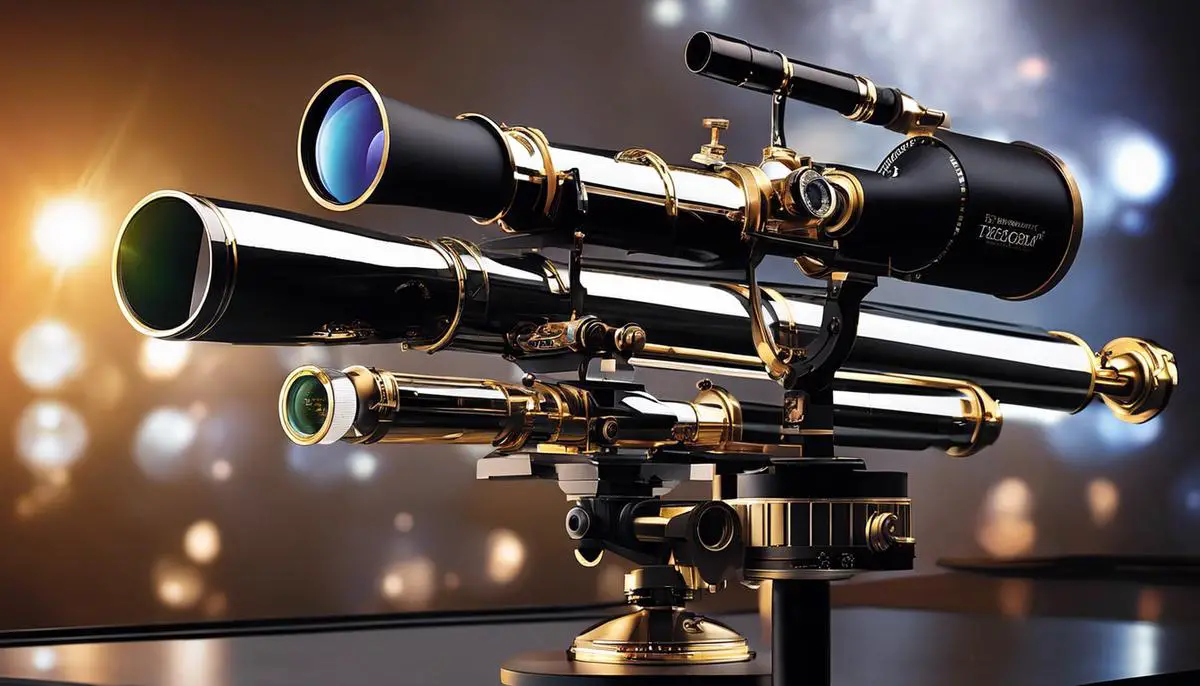
Mounts and Tracking
As we extend our gaze to the luminaries of the night sky, the profound influence of telescope mounts and tracking systems on astronomical observation becomes unmistakably clear. These foundational components of telescopic apparatus are pivotal in augmenting the efficacy with which observers can engage with the cosmos.
Telescope mounts, essentially the tripods or platforms on which telescopes rest, fall within two principal categories: altazimuth and equatorial. Both are designed to support the telescope’s weight and enable smooth movement across different axes for tracking celestial bodies.
The altazimuth mount, simpler in construction, allows vertical (altitude) and horizontal (azimuth) motion. This mount is inherently suitable for terrestrial viewing and casual celestial observation. Its straightforward mechanism makes it an excellent choice for beginners due to its ease of handling and relatively low cost.
Meanwhile, the equatorial mount, more complex by design, is aligned with Earth’s rotational axis. One of its axes, the polar axis, points towards the celestial pole, thus facilitating a single-axis tracking of celestial objects as they move across the sky due to Earth’s rotation. This single-axis motion significantly reduces the effort required to follow objects over extended periods and is especially advantageous for astrophotography and precise astronomical measurements.
Tracking systems, whether manual or motorized, work in synergy with the mounts. Manual tracking entails observers making continual adjustments to keep an object in view, a process that requires practice and patience. In contrast, motorized tracking systems, harnessing either electric or computerized mechanisms, automatically adjust the telescope’s position. This automation not only eliminates the need for manual input but also drastically improves the ability to study objects for long durations without interruption, vital for detecting subtle variations or movements.
Moreover, computerized mounts often incorporate GoTo capabilities, where the system is preloaded with a celestial database. With coordinates entered or selected, the telescope can automatically slew to the desired object, streamlining the observing session and allowing astronomers to maximize their time spent on analysis rather than on navigational tasks.
Each tracking system has particular attributes that make it ideal for certain types of celestial observations. For example, the manual altazimuth mount may suffice for general stargazing, whereas the precision of a motorized equatorial mount is indispensable for rigorous astronomical research or prolonged observation of specific celestial occurrences.
In sum, the synergy between telescope mounts and tracking systems is crucial in the pursuit of celestial observations. These technologies stand as silent yet tireless sentinels that carry observers across the cosmos, bringing the distant marvels within the brackets of our telescopes and the cusp of human understanding. As advancements continue, each innovation in this domain further unravels the enigmas of the stars, contributing to the grand tapestry of our cosmic quest.
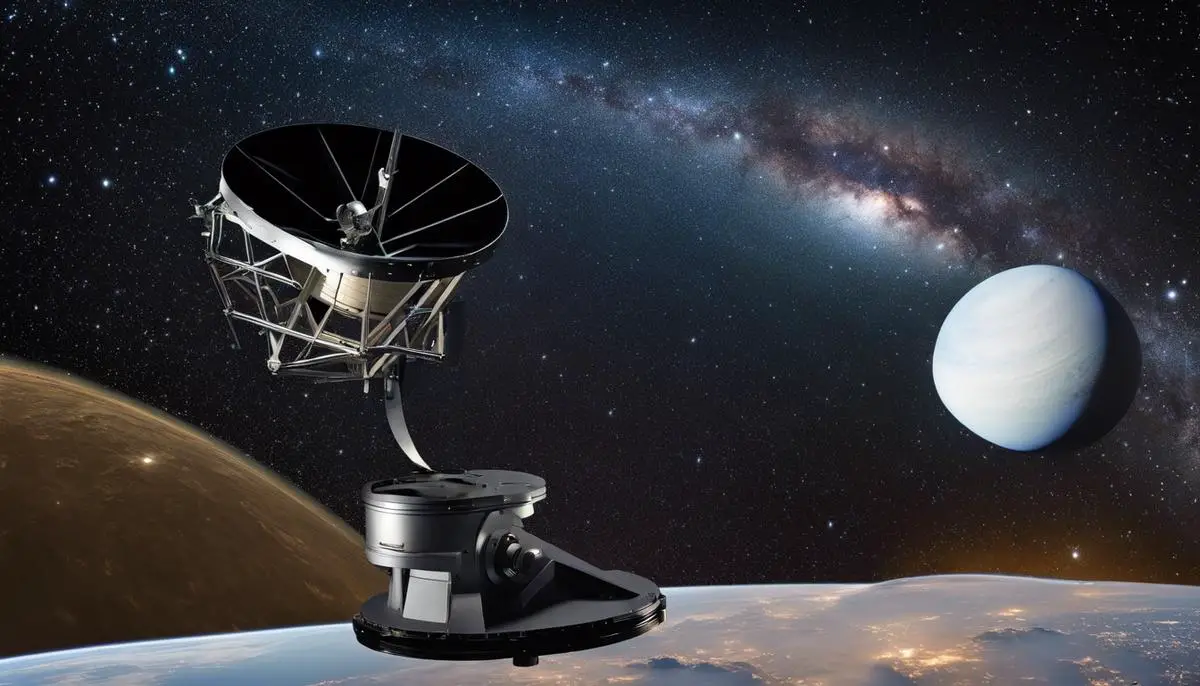
Optics and Resolution
Delving deeper into the world of astronomical observation, we arrive at the pivotal concepts of optical quality and telescope resolution.
It is no mere exaggeration to state that these two factors are the linchpins of clarity and detail in the observation of celestial objects, affecting every aspect of what the stargazer ultimately perceives through the eyepiece.
Optical quality refers to the ability of a telescope’s optics to render a clear image without aberrations. High optical quality implies that lenses or mirrors have been ground and polished to precise specifications, allowing for the accurate focusing of light from the observed object. When optical quality is subpar, the viewer is beset by distortive effects like chromatic aberration in refractors, where colors fringe around objects, or spherical aberration in reflectors, where the image may appear blurred. It is these deviations from perfection that can turn the tranquil pursuit of astral observation into an exercise in frustration.
The resolution of a telescope, on the other hand, is a measure of its ability to distinguish between two close objects in the sky or to reveal the fine detail of a single object. Resolution is often tied to the concept of the Dawes Limit, which correlates directly with the aperture size of the telescope—the larger the aperture, the finer the details that can be resolved. In observing surfaces layered with intricate features, such as the lunar landscape or the cloudy bands of Jupiter, resolution plays a critical role. It is the gatekeeper of celestial secrets, determining whether we perceive a distant galaxy as a smudge of light or as a spiral structure with individual clusters of stars.
When observing different celestial objects, the importance of these factors cannot be overstated. For instance, the observation of planets within our solar system requires high resolution to distinguish features like the rings of Saturn or the Great Red Spot of Jupiter. In such instances, the Dawes Limit serves as a guideline for what can be expected, while even modest telescopes with exceptional optical quality can exceed expectations.
Conversely, when the aim is to observe deep-sky objects, such as nebulae or galaxies, resolution remains important but must be balanced with the need for a wider field of view. In this challenging domain, optical quality is paramount to ensure that these often faint objects can be observed without degradation of the limited light they emit.
In the dynamic environment of earth-based astronomy, where our planet’s atmosphere acts as a tumultuously undulating lens, the necessity for superior optical quality is further compounded. The atmosphere can smear and scatter incoming light, an effect known as ‘seeing,’ which can diminish the telescope’s effective resolution. Here, adaptive optics and other corrective techniques come into play, offering methods to counteract atmospheric distortion.
In summary, while the aforementioned types of telescopes provide the scaffolding of observational capacities, it is optical quality and resolution that dress that scaffold with substance, enabling astronomers to gaze deeper into the vastness and bring the universe into sharper focus. These considerations play a dominant role in the experience—and overall success—of astronomical observation, dictating the veracity and depth of celestial study.
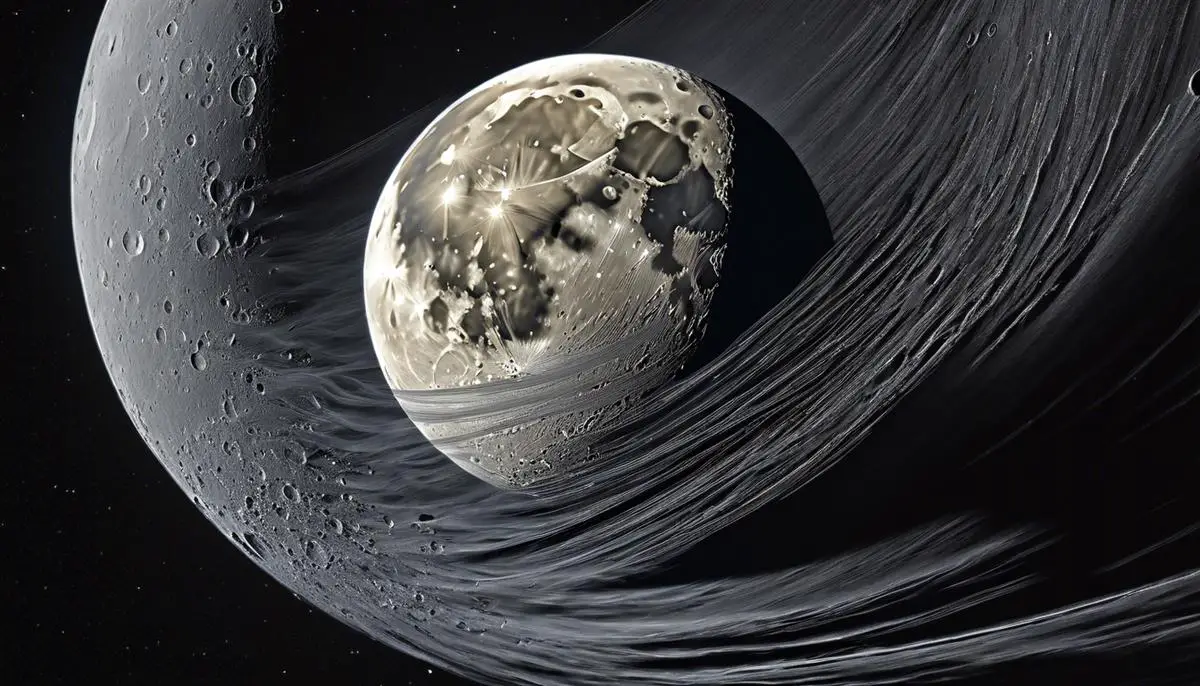
Adaptability and Accessories
The Role of Telescope Accessories in Enhancing Celestial Observations
Telescope accessories possess pivotal roles in expanding observational capabilities and refining astronomical data’s precision. Understanding the interplay between these accessories and a telescope’s fundamental structure is instrumental in unleashing the full potential of celestial observations.
Eyepieces are essential in determining magnification, and a suite of varying focal lengths affords observers the agility to interchange views, from wide star fields to close-up planetary detail. An eyepiece of premium caliber not only offers a comfortable viewing experience but enhances the image clarity delivered through the optical pathway.
Furthermore, filters are indispensable tools for the astute sky-gazer. These devices, tailored to isolate specific wavelengths of light, enable the enhancement of contrast in planetary atmospheres or the attenuation of light pollution, thus sharpening the image and mitigating interference that may obscure faint celestial bodies or delicate structures.
The introduction of cameras and advanced imaging accessories into the realm of telescopic apparatus has revolutionized the field of astrophotography. With CCD cameras and DSLRs, nebulae, galaxies, and supernova remnants, often invisible to the unamplified eye, can be captured in exquisite detail. Techniques such as long-exposure imaging and stacking can reveal an object’s subtleties as well as expand our glimpse into the more intangible segments of the cosmos.
Barlow lenses serve to augment a telescope’s effective focal length, thereby increasing magnification without demanding a larger collection of eyepieces. Their utility lies in the preservation of the eyepiece’s inherent eye relief and field stop, providing an enhanced viewing scale while maintaining comfort for the observer.
On the other hand, focal reducers work conversely to Barlow lenses, decreasing the effective focal length and broadening the field of view. This expansion is particularly beneficial when surveying expansive cosmic structures such as large nebulae or star clusters, areas where panoramic perspective imparts a greater understanding of spatial context and structure.
To counteract light loss and augment visual acuity, enhanced coatings can be applied to accessories. These coatings act to minimize reflections and optimize the transmission of light through optical systems, thereby ensuring each photon’s journey from the distant cosmos to the observer’s eyes is as unhindered as possible.
Mount accessories also bestow vital benefits. Polar scopes refine the polar alignment process in equatorial mounts, directly impacting tracking accuracy. Counterweights and dovetail plates facilitate balance and stability, ensuring vibrations and movements are minimized, paramount for both visual and photographic stability.
In all, auxiliary equipment constitutes an indispensable component of the astronomical toolkit. Each piece, from the humble eyepiece to the sophisticated camera, underpins our ability to probe further, perceive more acutely, and encapsulate more completely the enigmatic expanse of our universe. Their judicious application not only complements the inherent strengths of telescope designs but also compensates for their limitations, permitting a tailored approach to assorted celestial pursuits. It is through these instruments of human ingenuity that our quest for cosmic comprehension continues to stride with ever-increasing strides towards the horizons of knowledge.
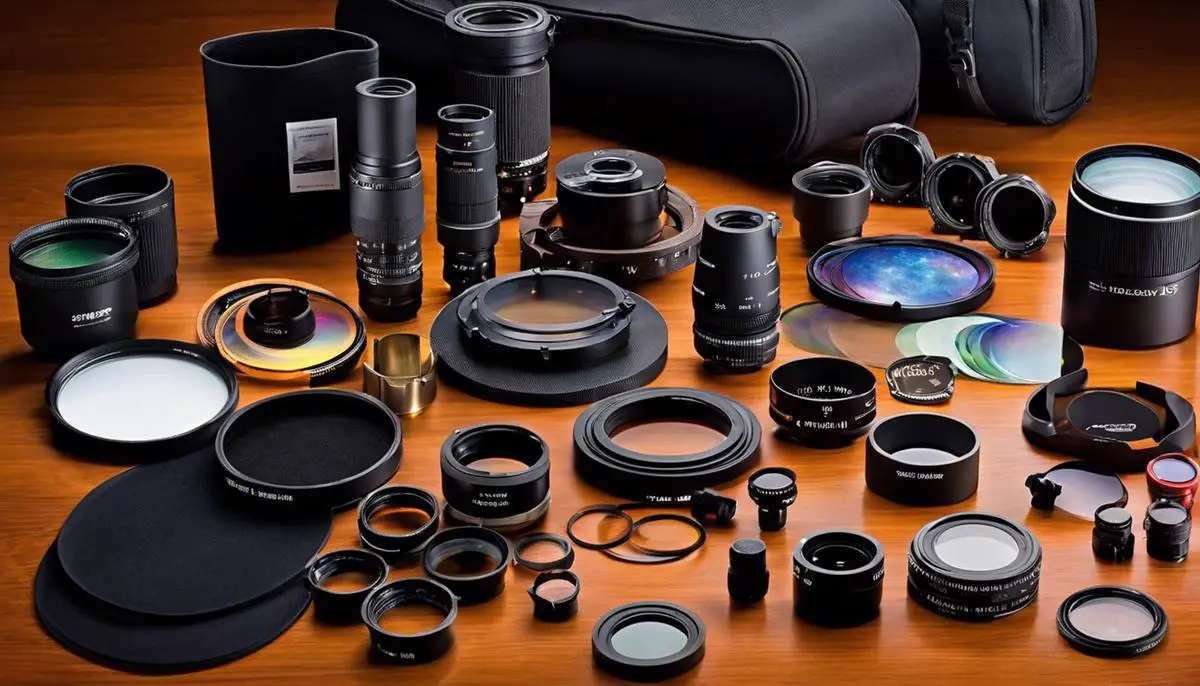
The cosmos offers an everlasting well of knowledge, with each glance through a telescope being both a journey back in time and an exploration of the frontiers of our understanding. Whether you wield a humble refractor on a serene hilltop or command a sprawling reflector under a dome of chrome, the tailored insights and custom tools of the trade enhance this timeless pursuit. As we stand on the shoulders of titans who crafted lenses and polished mirrors, we too become explorers charting courses across the astral seas. Embarking on this venture with a deep appreciation for the technology that facilitates our gaze, we find that reaching for the stars is not just a dream but an ever-expanding reality shaped by the lenses through which we choose to see the universe.
![]()
